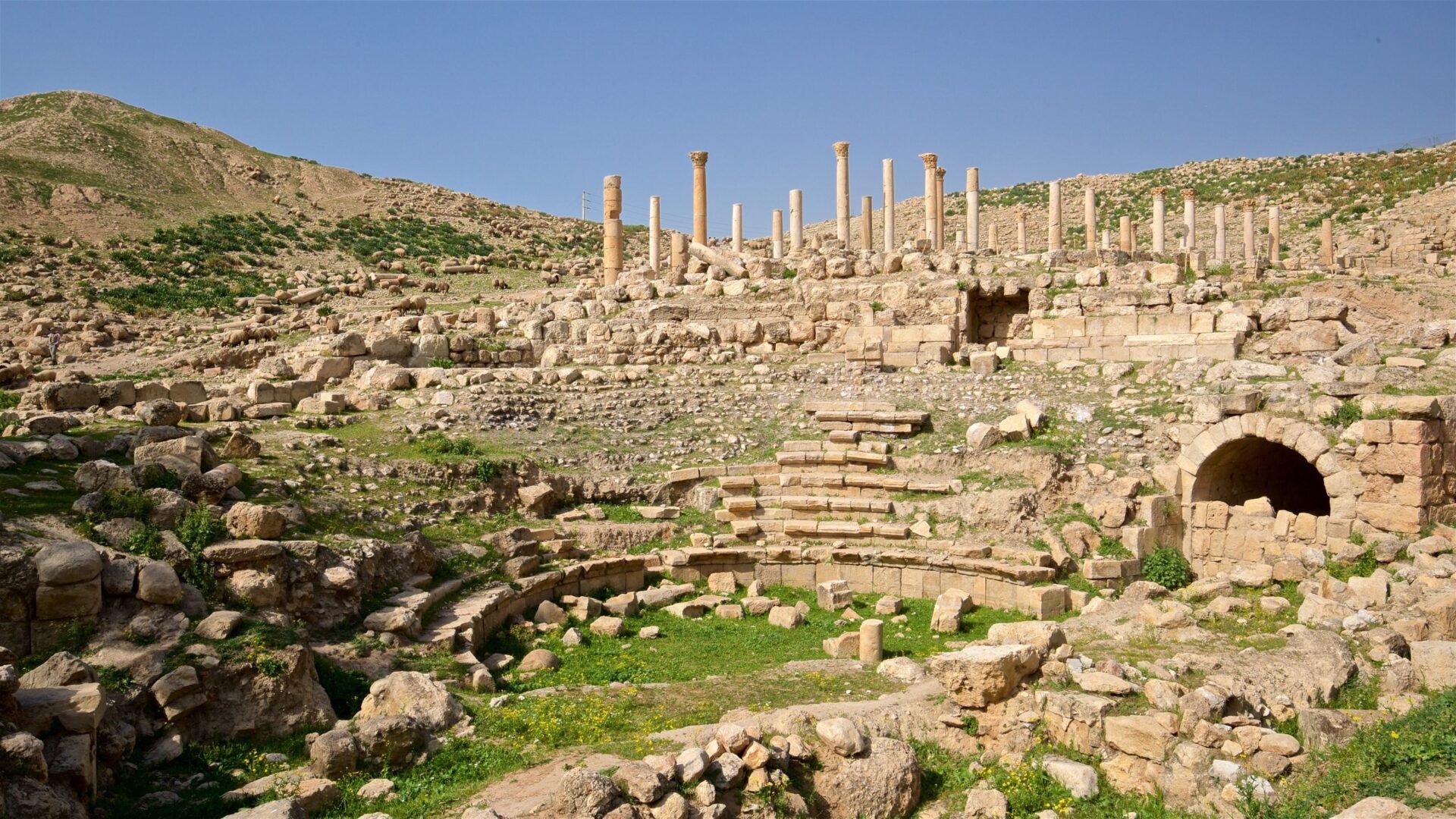
Pella
Jordan's Decapolis city of Pella, part of modern Tabaqat Fahl, is located overlooking the Jordan Valley, just one and a half hour Northwest of Amman. Continuously occupied since the Neolithic period around 6500 BC, Pella enjoys one of the longest pre-classical histories of any site in Jordan.
By walking around Pella’s extensive ruines - the 400 m long Khirbet Fahl, the large Tell al Husn to the south and the fertile Wadi Jirm between them - the visitors can experience fascinating glimpses of many of Jordan's key historical periods. It is a site which offers something to discover for everyone’s interests, although best known are its classical (theater, bath house, nymphaeum) and Late Antique remains (at least three churches, a mosque, domestic houses.)
Although Pella dates back to around 5000 BC, it wasn’t until the Greek and Romans occupied the site that it truly prospered. It was conquered by Pompey in 63 BC and became one of the cities that formed the Roman Decapolis League. The Decapolis League was comprised of ten cities in the Levant that were claimed by the Roman Empire. It is likely to have been recognized by the Romans due to its prime location on the trade route. During the Byzantine era, there were 25,000 citizens living in Pella and it was a thriving city. The area is also believed to have inhabited humans since the Stone Age making it a very important archaeological site.
